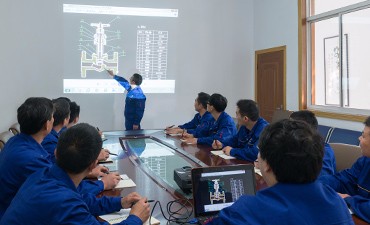The 2018 Annual Symposium on national major research instruments development project was held in Xi'an, Shaanxi.
Release time:2018-09-11Browsing volume:887
On August 21-23, the 2018 technical seminar on the development of extrasolar planetary exploration system based on new coherent dispersion technology was successfully held in Xi'an, Shaanxi Province. More than ten experts and scholars from China Polar Research Center, Nanjing University, National Astronomical Observatory, Nanjing Tianguang Institute, Yunnan Observatory, Xi'an Institute of Optics and Machinery and other domestic universities and research institutes attended the meeting to jointly work out suggestions for the development of the project.
Light is an important medium for human beings to understand the universe. By using the small disturbance caused by the planet's gravity to the stars'movement and through the spectral detection of the distant stars' light, it is found that the Doppler shift caused by the change of the speed of the stars'spectrum can be indirectly inferred whether there are planets orbiting the stars, and can enter one. Step by step determines the minimum mass of the planet. This method of detecting extrasolar planets is called the apparent velocity method. So far, more than 700 exoplanets have been discovered by using the apparent velocity method. The coherent dispersion technique based on the principle of interference and dispersion is a new and effective way to realize the LOS velocity method and improve the detection accuracy. By measuring the spectral shifts of stars with high accuracy by the Coherent Dispersion Instrument (CODES), sub-m/s measurement accuracy can be achieved, and habitable/quasi-exoplanets may be found.
During the meeting, the project leader, Wei Ruyi, reported on the overall annual progress of the project and the follow-up research plan, and put forward relevant requirements; the sub-project leaders of the participating units of the National Observatory, Nanjing Tianguang Institute and Yunnan Observatory reported on the implementation of the task respectively. Participants discussed the technical problems, node arrangement, communication and docking mode of the project, and gave effective guidance. The conference also issued appointment letters for the project to employ experts and consultants. After the meeting, experts and scholars attending the conference visited the spectroscopic room.
Through this meeting, the research team has deepened the understanding of the research and development task, and the cohesion has been further strengthened; the participating units have not only seen the achievements, but also found some problems in project research and management, and timely formulate measures to solve them. The participating research units have indicated that they will strictly follow the schedule of the project, concentrate their superior scientific research forces to promote the development of the project, complete the research objectives of the project with high quality, and contribute actively to the development of astronomy in China. (source: Network)

Return
Disclaimer:This website is reproduced by editors of our website. The purpose of reproducing is to convey more information. It does not mean that our website agrees with its views and is responsible for its authenticity. If it involves the content, copyright and other issues, please contact us within 30 days, we will delete the content at the first time! [Statement] The copyright of the article on this site belongs to the original author and provides reference only for the author's personal opinions. It does not constitute any investment and application suggestions. This station has the final right to interpret this statement.






